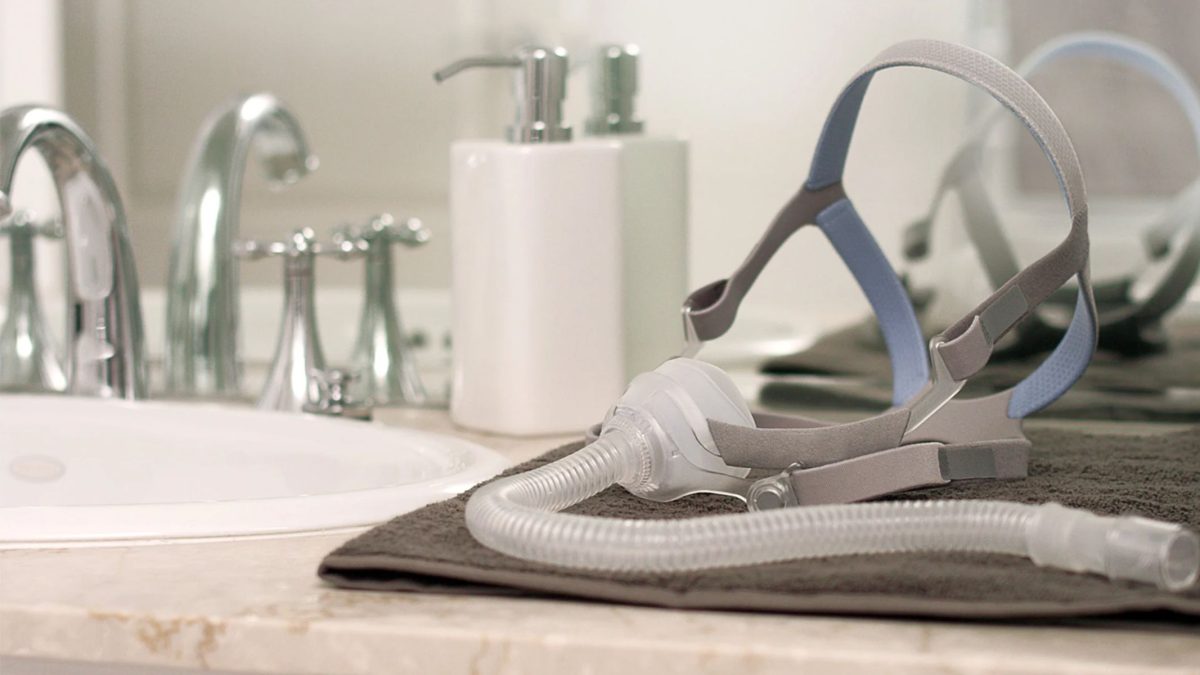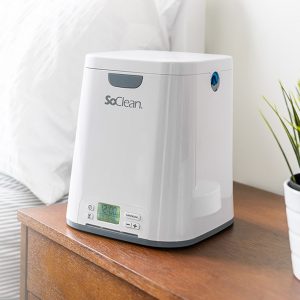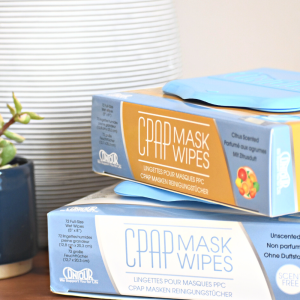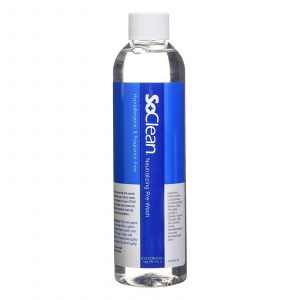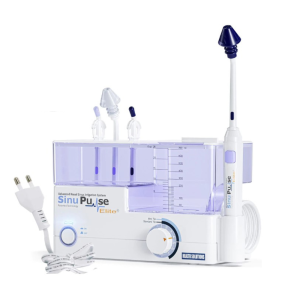Fact Checked
Intus Healthcare’s writers, customer service team, and sleep experts review and ensure this information is accurate.
Last updated on February 12th, 2024 at 10:17 am
How to Properly Clean Your CPAP Supplies
Cleaning your CPAP equipment is a quick and simple way of keeping your therapy comfortable and effective. The cleanliness of your therapy components is essential, as it removes dangerous microbes, dust and mould to ensure you breathe in clean and healthy air pressure that makes you feel good.
A clean CPAP mask helps maintain a good seal during the night and reduce or prevent skin irritation – and it only takes a few minutes! Cleaning your supplies also helps improve each part’s lifespan, decreasing how often you need to purchase replacement parts.
This page will explain how to quickly clean and sanitise your CPAP machine, mask, and tubing.
Table of Contents
What Is The Best Thing To Clean Your CPAP With?
Here is a list of some basic supplies to clean your CPAP equipment that you likely already have:
- Warm water
- Antibacterial dish soap
- A soft cloth
- White vinegar
- A towel
Once you have your cleaning equipment, you can begin your CPAP cleaning routine.
How to Clean Your CPAP Equipment in Six Steps
To be followed daily:
- Begin by disconnecting all of your equipment before beginning your cleaning, e.g. unplug the device, take out the water chamber from your humidifier (if you have one), disconnect your mask and tubing, remove a hose fleece if you use one, and disassemble your mask headgear, cushion and frame.
- Fill your sink with warm, soapy tap water and let your mask and accessories (mask parts, tubing and humidifier chamber) soak for about 30 minutes. Avoid getting velcro mask parts wet, as this can affect the lifespan. If you use heated tubing, ensure the electrical connection point does not get wet. You can add a small amount of white vinegar into the water to clean minerals that have built up; please ensure no fabrics are in the cleaning mixture when adding vinegar.
- Rinse thoroughly with warm water.
- Allow your mask parts and humidifier to air dry on a towel away from direct sunlight to avoid damage. You may find it easier to dry your tubing over a shower rail.
- If your filters become discoloured, it is clear they need to be cleaned or replaced. To clean your reusable CPAP filters, remove them, rinse with warm water, squeeze all access water out and blot with a towel to dry. If your machine uses disposable filters, do not follow the cleaning process, as they need to be replaced depending on their replacement schedule.
- Ensure all equipment is dry before reconnecting them to your CPAP device. With a lightly damped cloth, wipe the outside of your machine. This removes dust and dirt particles without damaging your machine. Make sure it is completely dry before plugging it back in.
We understand it can be hard to keep up with this daily cleaning routine, so doing it weekly will also benefit you. However, cleaning your mask cushion daily is essential.
Please note you should always refer to your CPAP machine or mask product manual guide when cleaning your equipment.
How Often Should I Clean My CPAP?
CPAP manufacturers advise cleaning your supplies daily as it prevents cases of serious illness caused by unclean therapy devices. Some other daily advice to follow is to use fresh distilled water in your humidifier and to clean your face before using your CPAP mask. This helps to prevent illnesses and remove access oils from your mask. Removing the oils is a key way to help prevent skin rashes and red marks caused by a dirty mask. It is important to know that not cleaning your machine may void your manufacturer’s warranty.
Why Is It Important to Clean Your CPAP?
Cleanliness is very relevant when using a CPAP machine. An unclean or improperly cleaned unit can open up a host of potential issues. Some of the most common include:
- Red facial marks
- Skin irritation
- Chronic respiratory conditions
Without cleaning your CPAP equipment, you also run the risk of:
- Mineral build-up in the filter
- Premature wear and tear of your equipment
- An increased risk of health issues such as sinus problems
- The growth of mould and bacteria
- The possibility of voiding your machine’s warranty
Considering your CPAP hygiene will benefit your long-term health and support the longevity of your equipment. Each part of your CPAP equipment’s lifespan depends on your usage frequency, cleaning routine and whether the part makes direct contact with your face.
Important Considerations
- Your machine is a breathing device that you use all night long; when you are sick, the microbes sit in the machine. The contamination can worsen your illness and potentially reinfect you after recovery. Cleaning your equipment stops this from happening.
- CPAP machines use one or two filters which stop bacteria, dust and fine particles from entering your air pressure. These need to be replaced regularly. Fine disposable filters should be replaced every 30 days, and reusable filters must be washed regularly. Please see your device’s user guide for manufacturer guidance.
- Cleaning your supplies is a great way to check the condition of each component and to check for wear and tear.
Can I Use Bleach to Clean My CPAP Machine?
No, under no circumstances should you use bleach to clean your CPAP equipment. This can be extremely harmful to your health.
Avoid using the following to clean your equipment:
- Moisturising soaps
- Bleach,
- Scented oils
- Chlorine
- Alcohol-based solutions
As these can irritate the skin and damage your supplies.
CPAP machine cleaning accessories
SoClean CPAP Sanitiser
The SoClean 2 is an easy-to-use CPAP disinfector that automatically sanitises your equipment. The fast and effective appliance kills 99% of germs with no water and no chemicals with a two-year warranty.
Simply place your mask, tubing and water reservoir into the SoClean and push the button. The sanitiser uses ozone gas to kill pathogens hiding in the dark, making your life much easier. The SoClean also removes the struggle of disassembling your equipment in order for it to be cleaned.
However, it is worth noting that you will still need to clean your CPAP equipment as the SoClean 2 is a sanitiser only.
CPAP Mask Wipes
If you would like a quicker and easier way to clean your mask. You could consider CPAP cleaning wipes. These handy wipes take away the hassle of using soap and water to clean your mask. They have been created using natural ingredients derived from citrus, coconut and other plant extracts.
You can choose between citrus-scented or unscented wipes; each pack contains 75 wipes. The wipes are alcohol and latex-free.
These are also a great way to wipe down the outside of your CPAP machine.
If you are travelling with your CPAP, these are a great source to pack with you, as they are efficient and small.
Cleaning Consistency is Key
The best way to lessen the symptoms associated with your Obstructive Sleep Apnoea is to clean your machine properly, so feel free to refer back to these instructions when needed.
It is always beneficial to keep note of your CPAP equipment replacement schedule. As all parts have different duration periods, keeping notes will help you get the most out of your sleep therapy.
If you are unsure about cleaning parts of your CPAP, refer to the user manual, as this will help. Alternatively, you can contact us.

